Climate Change and Nuclear Risk:
The Forthcoming (Un)Natural Disasters
By Frédéric Moreau
There is probably one particular risk that no government has ever contemplated to date: The risk resulting from climatic changes, already in progress, combined with nuclear risk. Super-storms are one aspect of climate change. A number of climate scientists, among them James Hansen[1], have described the mechanics that generate them. The main cause is the thermal imbalance between the warm and cold air over the ocean, which is considerably amplified with global warming. To find a new equilibrium, that is, a mean temperature (and pressure), both areas tend to mix their air, a process that can unleash extremely fierce winds. This amplification will steadily increase as long as the polar caps keep melting, constantly bringing cold water onto the surface of the surrounding oceans where it acts as a floating lid. Unsalted water is lighter, cooling the air above and preventing the warmth thus trapped in the depths to diffuse rather quickly into the atmosphere. The resulting winds may reach up to 300 mph (about 500 km/h). Cyclone Irma, which devastated the French island of St Martin in the Caribbean Sea in the Fall 2017 with its unusual 360 km/h wind gusts, might be considered a mere warning of what to really expect in the near future: Worse. When “hell will break loose”, to quote James Hansen, these super-storms will literally raise ocean levels by several meters when pushing the water in front of them. Giant waves up to 30 meters, twice the height of the one generated by the tsunami that hit the Fukushima Daiichi nuclear power plant, could then drive boulders weighing more than 2,300 tons to the up to 20-meter high shoreline. These would be similar to the ones left in the Bahamas by super-storms in the past[2].
As for the nuclear risk, since Three Mile Island (1979), Chernobyl (1986), and Fukushima (2011), in addition to the numerous “minor” incidents that haven’t been talked about — no one can deny its reality and potential extreme gravity any longer. Given these past accidents, we can now postulate that an earthquake-triggered tsunami is no longer needed to generate destructive waves. Super-storms will indeed be more frequent than powerful earthquakes, and related giant waves, able to push 2300-ton boulders along the ocean floor, far more numerous and higher than the one that damaged the Japanese power plant. One question comes to mind right away: Are these seaside nuclear power plants designed and built to resist such impacts? For several years the whole world lived under an unknown threat that could have turned out to be far worse than the initial disaster of 2011. Stored in the “pool” of reactor number 4, there were 264 tons of highly radioactive spent fuel, which took a long time to clear. This pool was located in a badly damaged building that was likely to collapse if another strong earthquake were to occur. French physician, Jean-Louis Basdevant, tried to draw our attention to this point as early as 2012 in a paper published in the weekly magazine Le Nouvel Observateur[3] ; however, as it often happens, it was not picked up by wider-reaching medias such as TV channels and national radio stations. To keep watching and listening to the media, people should not be overly frightened only while watching scary movies in theaters, in which the end is usually far better than the one endured 66 million years ago by dinosaurs not initiated to wishful thinking as we are.
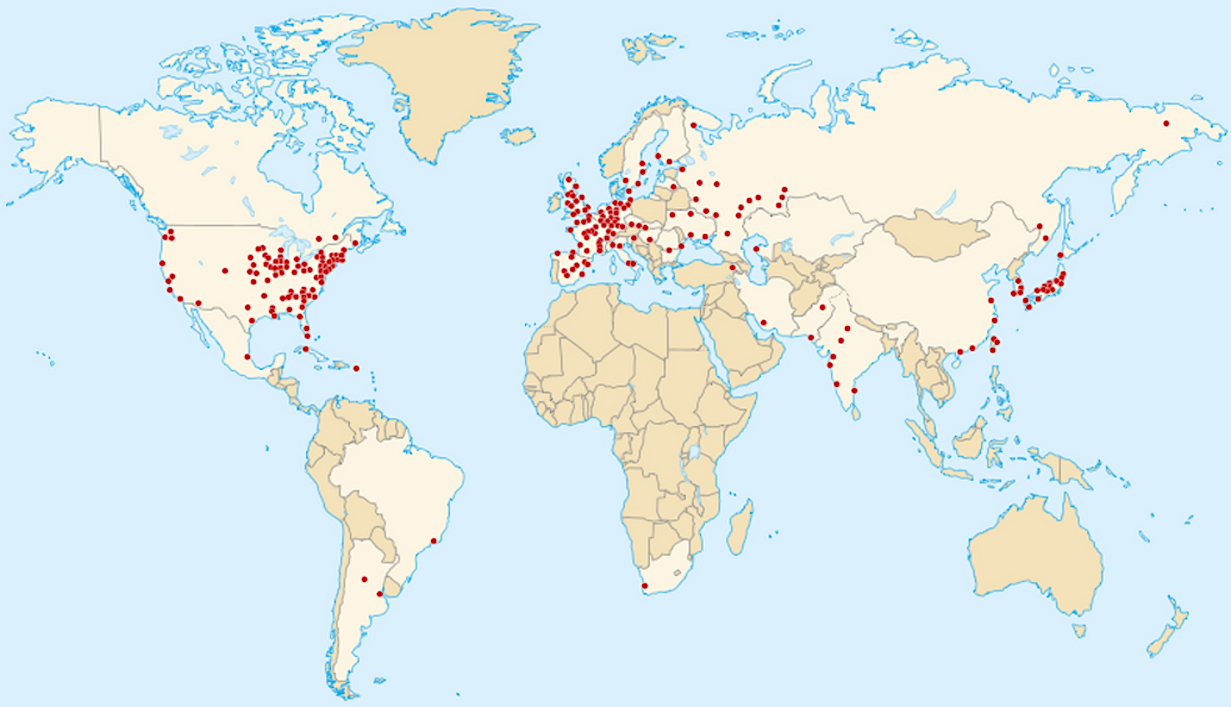
But the power plant in Fukushima is not the only one of concern because the risk of natural disasters won’t remain exclusively focused on earthquake-prone regions, such as the fire ring around the Pacific Ocean. It will extend to those exposed to super-storms, namely the shores of the North Atlantic Ocean. It’s easy to dread this new risk when one takes a brief glance at the map above. It shows the seaside locations, for obvious cooling purposes, of nuclear power plants worldwide, and one can count dozens of them.
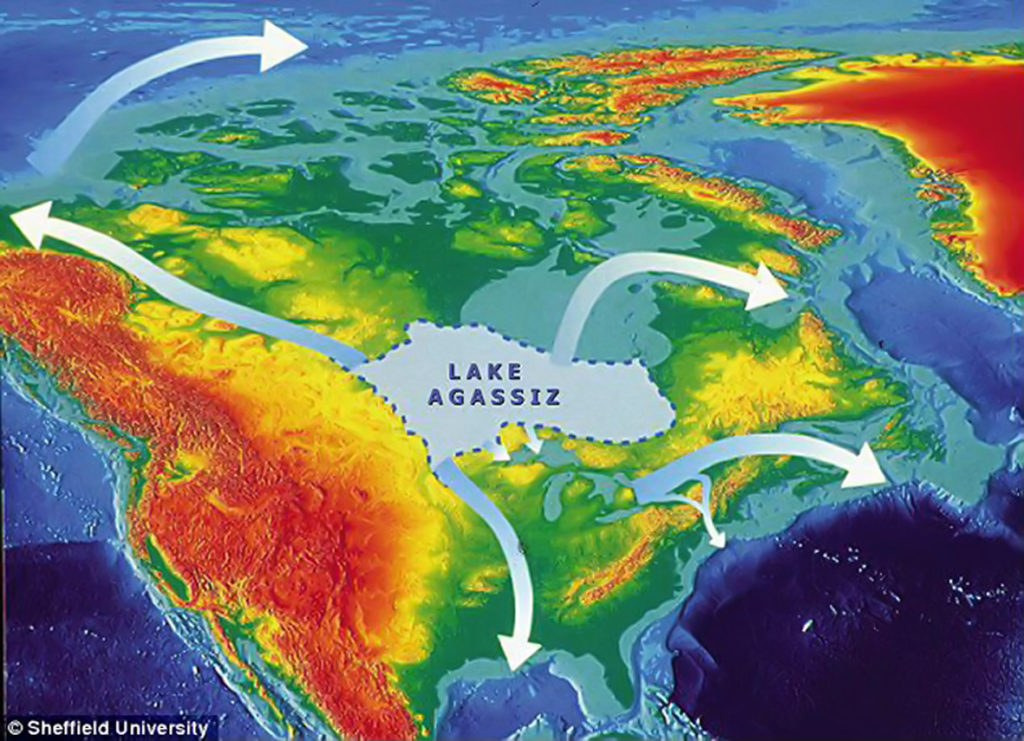
Another risk that is linked to global warming and climate change lies in the sudden sea-level rise that could flood these nuclear power plants. This risk is slower and presumably less imminent than super-storms. So far, the melting of the ice can be broadly perceived as inconsequential as it is approximately a comforting 3mm per year — nowhere near nightmarish levels. Scientific sedimentary studies like the one published on the “Earth and Planetary Science Letters” website[4] make it clear that the planet has experienced sudden and huge sea-level rises in the past — sudden 0.50 to more than 2-meter rises. This happened 8,200 years ago when the Agassiz-Ojibway glacial lake emptied out – a lake that had been created by melting on top of the ice cap located in North America. This Heinrich event, as it is referred to, caused the water to flow into Hudson Bay and the oceans, adding to them an estimated 200,000 cubic kilometers of water, as estimated by some scientists.
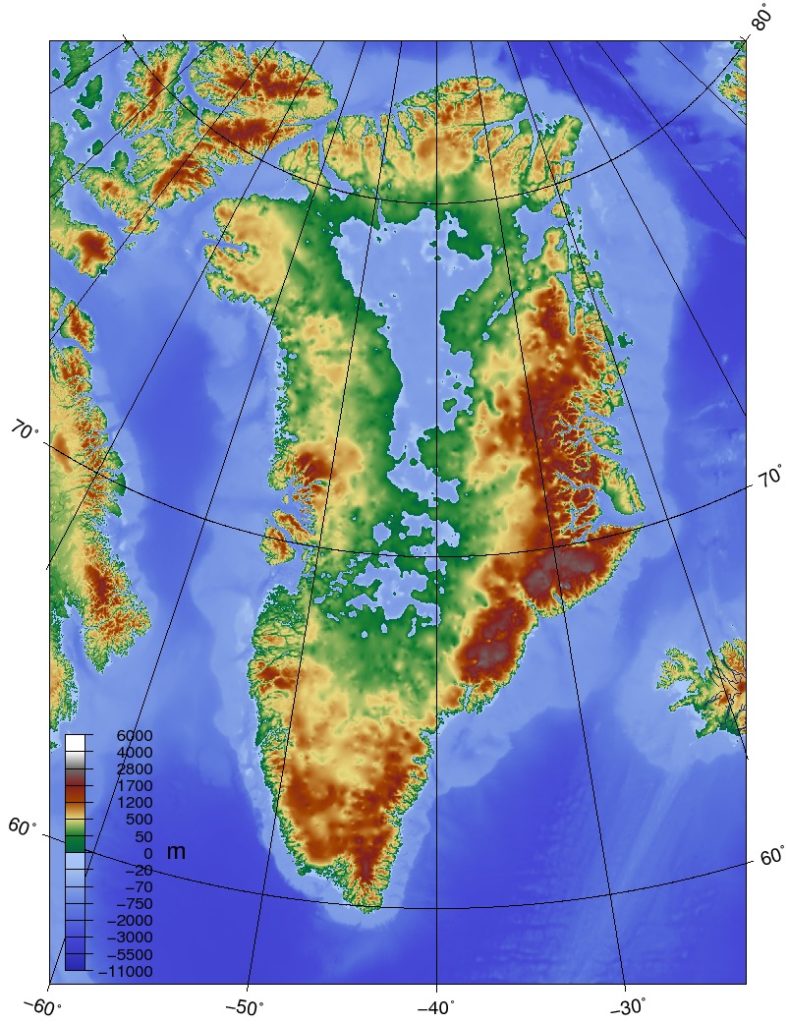
Note the inside of the island that is below sea level.
According to various studies, this caused a sea-level rise ranging from 0.80 to 2.20 meters in about a year or even less. This is what was meant by “sudden”. Of course, we currently don’t know of such a lake. But what about hidden lakes inside the ice caps? (Some have already been identified.) What about massive glacial calving and the resulting rapid collapses of peripheral parts of the ice caps? We should also bear in mind that Greenland is much more an atoll than an island (see map), which means that huge chunks of ice are rooted to the seabed — not to the ground above sea level. This specific pattern might present another risk, which has yet to be assessed.
Denying potential disasters won’t keep them at bay, even though our species has the tendency to think that what has never happened will never take place — but in our case it already has! A rapid and major sea-level rise would not only flood our port facilities, but also all of the imported Chinese goods containers all over the world. It would also flood a number of nuke facilities, or at least dramatically increase their exposure to submerging waves at high tide as well as during storms and occasional tsunamis. Larsen A and B ice banks have already disappeared, and Larsen C is on the same path. Many glaciers are still rooted to the seabed of shallow waters along the shores, where, unlike icebergs, there is more ice above sea level than under. This means more water in the oceans, if they were to disintegrate. Many glaciers are resting on the emerged ground. But for how long?
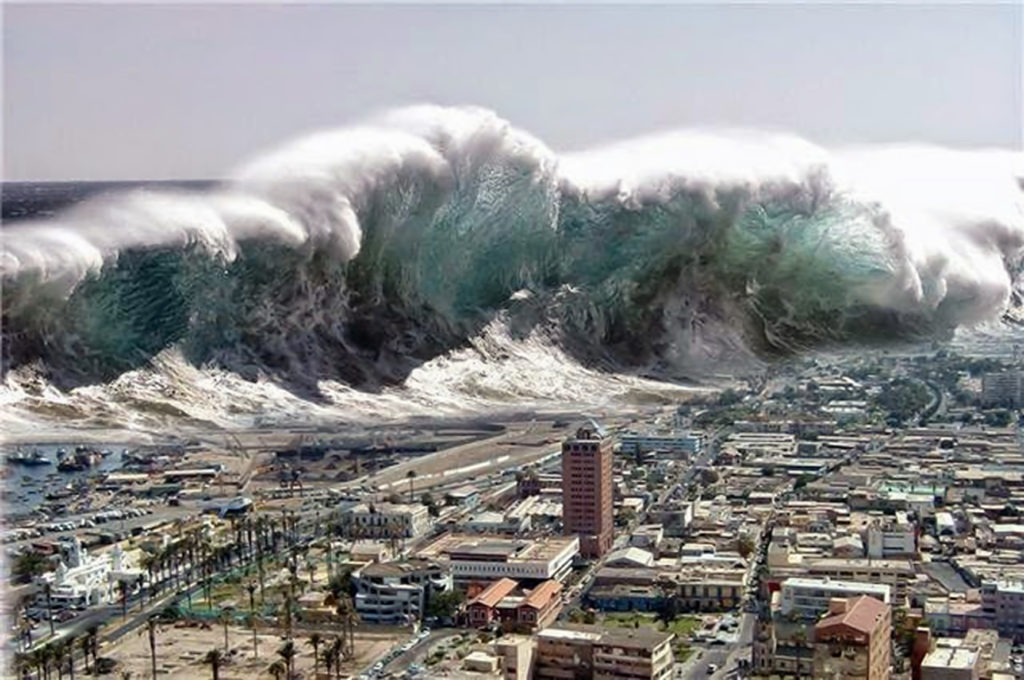
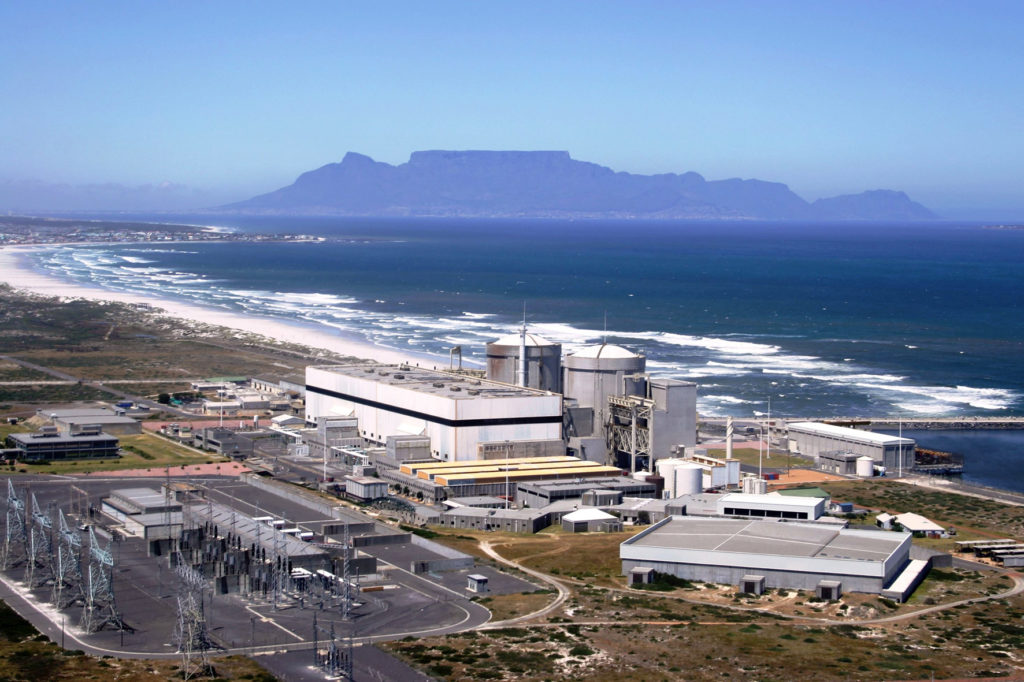
Like many others worldwide it is terribly at risk of suffering climate change triggered weather extremes like super-storms.
Given the length of time required to clear nuclear fuel from a damaged plant, which took years in Fukushima and is not fully completed yet, one wonders about dozens of other plants if they were to be shut down quickly. Quickly means a few months, or even weeks, as to shut down a nuclear plant properly is, of course, incredibly more complex than simply pressing on a wall switch to turn off a ceiling light. In addition, we haven’t discussed the dismantling of such facilities, which has been taking place for many years in Brennilis, Brittany, where one of the oldest French nuclear power plants is located. And it is not finished yet. I am not aware of any emergency procedures planned by any of our governments in the event of such scenarios, which are, unfortunately, not written by filmmaker Roland Emmerich but by Nature itself.
In the end, perhaps the contamination is not considered that major, since, as of early 2017, Japan is on the verge of simply dumping 920.000 tons of contaminated cooling water into the ocean. Japan is currently storing this contaminated water in 1,000 tanks. They currently don’t have any way of solving this problem.
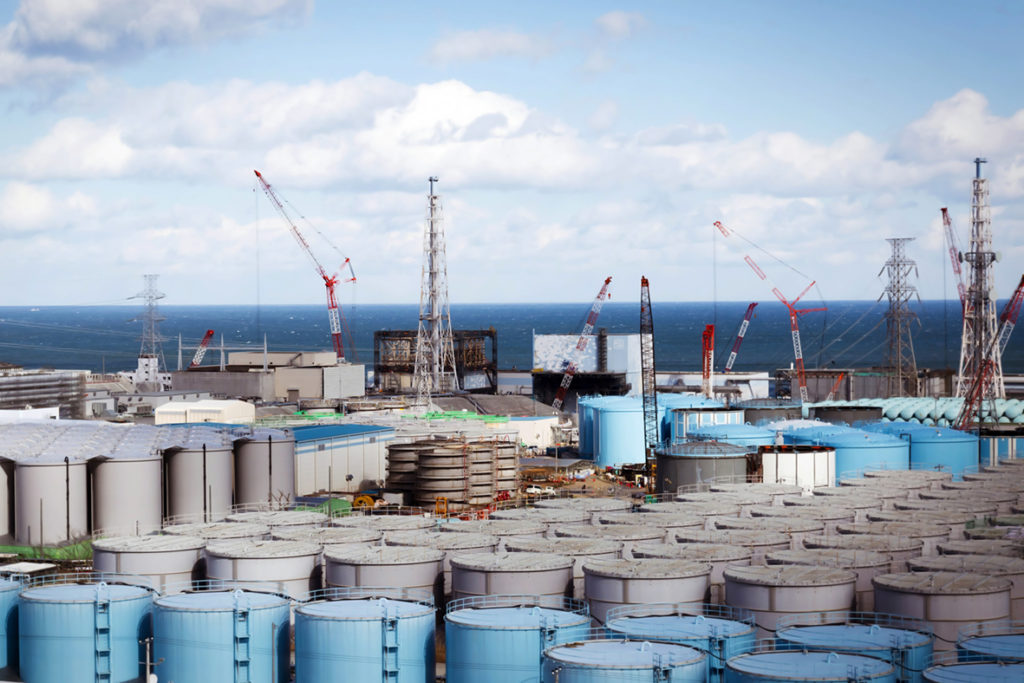
(Photo: Ko Sasaki for the New York Times.)
The water is but one problem among thousands of tons of various other radioactive wastes[5]. As for the reactor core, it is still melting and it keeps sinking into the ground and combining with matter encountered on its way down — now referred to as corium. But should we be that surprised? Since we first started building nuclear power plants, we have not known how to treat, recycle or eliminate radioactive wastes, although we have known perfectly well that radioactivity lasts for thousands of years. In addition, we don’t know how to dismantle these facilities — pretending or hoping that solutions will pop up on time, later, when needed, perhaps brought by Santa himself, because we think that we deserve it. But now we may actually be out of time before we will be affected by fast-approaching super-storms, giant waves, huge boulders, submerging tides and sea-level rise. Postponing once more is a luxury that we cannot afford anymore. We have to secure these seaside facilities now, for the sake of our children and other living creatures. This probably means that we need to shut them down for good and, at the very least, clear the fuel out of them, if totally dismantling them is not feasible.
1. Ice Melt, Sea Level Rise and Super-storms by James Hansen, http://www.atmos-chem-phys.net/16/3761/2016/doi:10.5194/acp-16-3761-2016 (in English), and video (with French subtitles) on Youtube: https://youtu.be/vswapCHtFjU
2. Boulder Deposits from Large Waves during the Last Interglaciation on North Eleuthera Island, Bahamas, by Paul J. Hearty, published in Quaternary Research (1997), Number 48, pages 326–338 (article n° QR971926).
3. http://tempsreel.nouvelobs.com/l-enquete-de-l-obs/20120822.OBS0162/enquete-fukushima-et-si-le-pire-etait-a-venir.html (Article in French)
4. https://www.researchgate.net/publication/238504773 – Synchronizing a sea-level jump, final Lake Agassiz drainage, and abrupt cooling 8200 years ago par Yong-Xiang Li, Torbjörn E. Törnqvist, Johanna M. Nevitt et Barry Kohl.